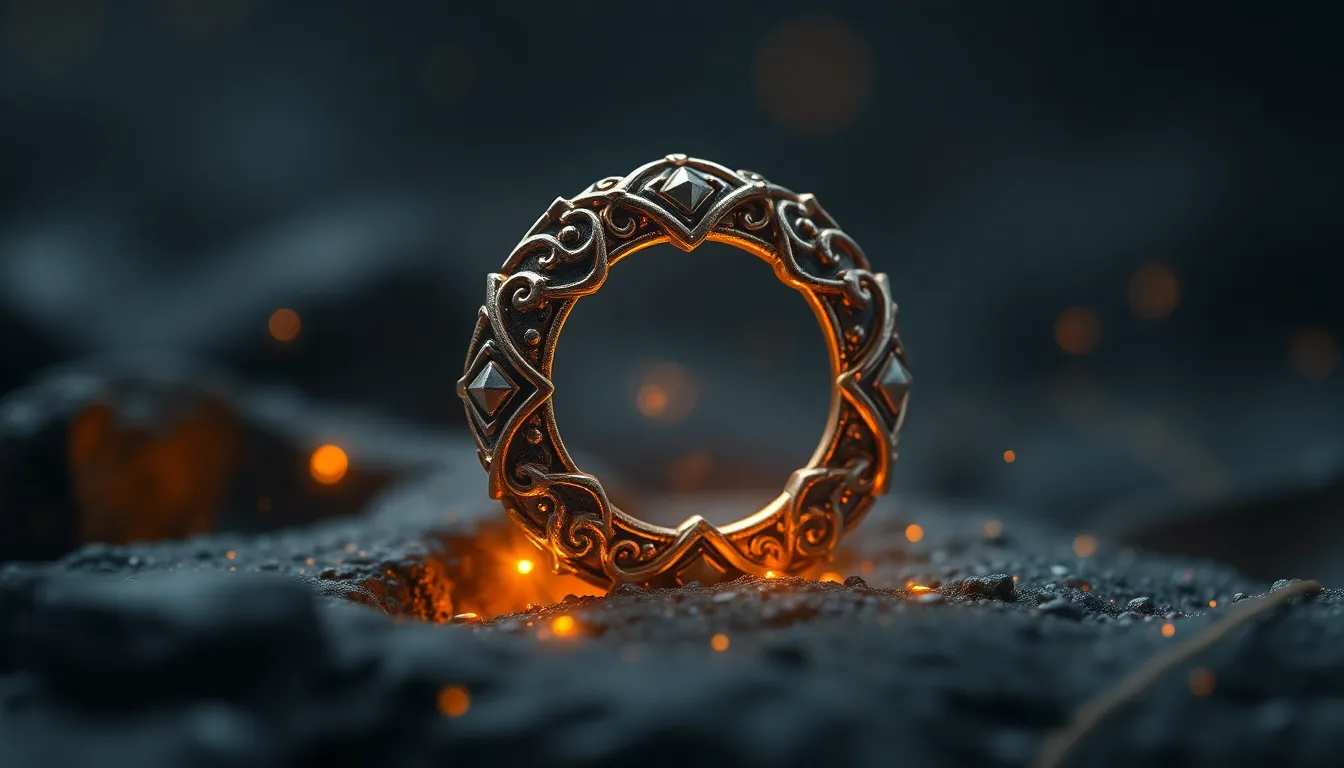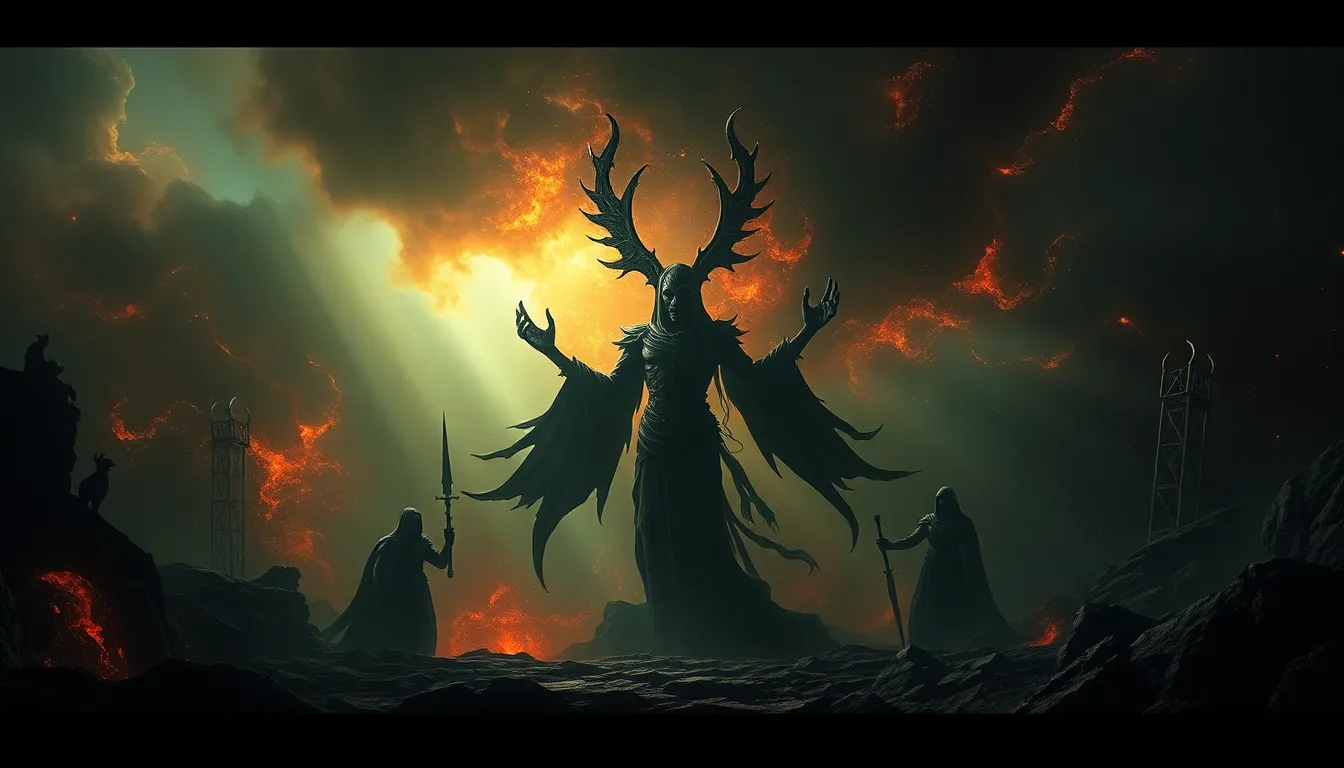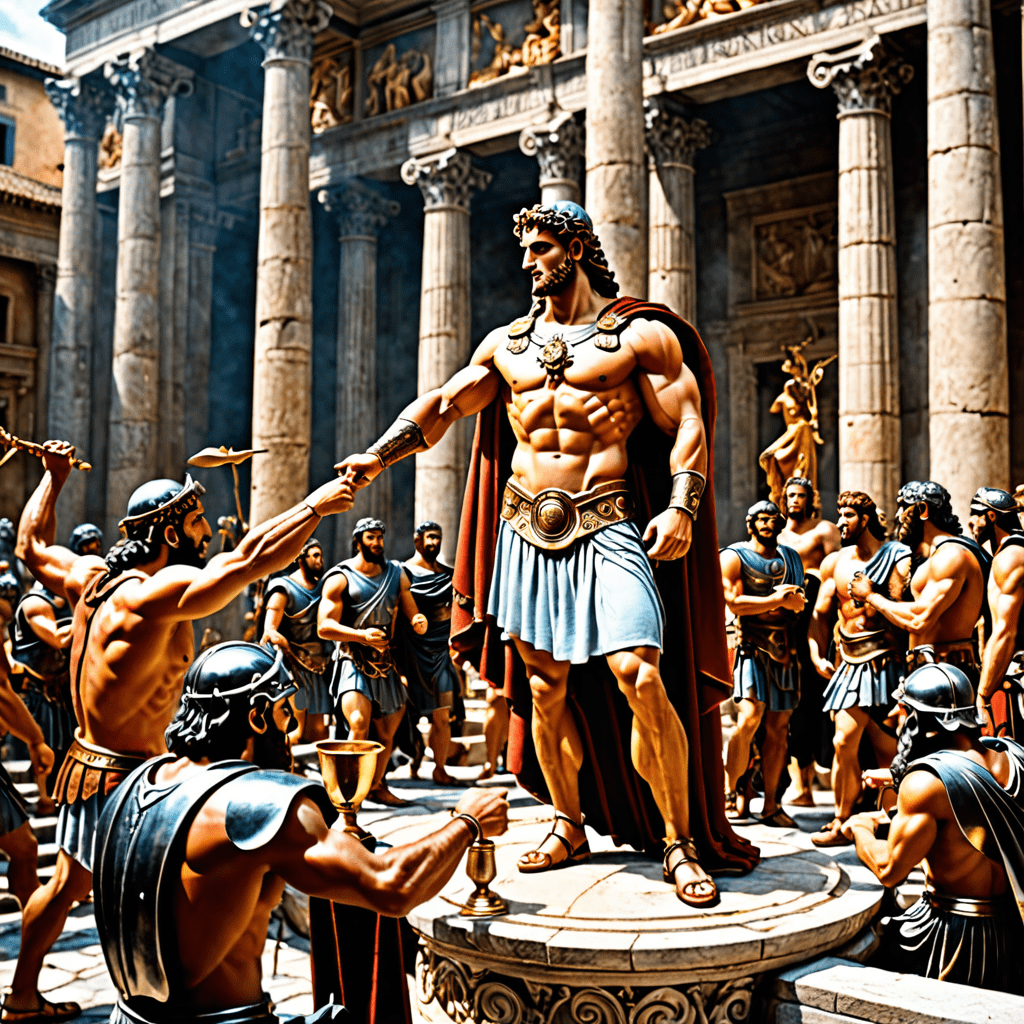The Draupnir Ring: The Gift of Abundance in Norse Myth
I. Introduction to Norse Mythology
Norse mythology, a rich tapestry of tales and legends, has captivated audiences for centuries. Rooted in the traditions of the ancient Norse people, these myths not only serve as stories but also offer profound insights into the values, beliefs, and worldview of a civilization that thrived in the harsh climates of Scandinavia.
Central to Norse mythology are key themes such as fate, abundance, and sacrifice. The stories often explore the inevitable nature of fate (or wyrd), the importance of generosity, and the sacrifices required to attain greatness or favor from the gods. One symbol that encapsulates these themes is the Draupnir ring, a powerful artifact representing wealth and prosperity.
II. The Origin of the Draupnir Ring
The Draupnir ring was crafted by the legendary dwarves Brokkr and Sindri, renowned for their masterful skills in metallurgy and craftsmanship. According to the myths, this exquisite ring was forged with the intention of bestowing endless wealth upon its owner.
Odin, the Allfather and chief of the gods, played a vital role in the creation of Draupnir. His quest for knowledge and power led him to seek out the dwarves, who were known for their unparalleled abilities in creating magical artifacts. The ring was not only a gift for Odin but also a testament to the dwarves’ craftsmanship.
In the context of Norse mythology, dwarven craftsmanship is of immense significance. These skilled artisans are often portrayed as the creators of many key artifacts, including Thor’s hammer, Mjölnir, and Freyja’s necklace, Brísingamen. The creation of Draupnir highlights the intertwining of divine and artisan efforts in Norse tales.
III. The Symbolism of the Draupnir Ring
The Draupnir ring is a potent symbol of abundance and prosperity. Its name, meaning “the dripper,” implies a continuous flow of wealth, as the ring has the magical ability to produce eight new gold rings every ninth night. This miraculous property not only signifies material wealth but also embodies fertility and the cyclical nature of giving and receiving.
The symbolism of Draupnir extends beyond mere riches; it represents the idea that true wealth lies in the ability to share and spread abundance. Each gold ring produced by Draupnir serves as a reminder of the interconnectedness of life and the importance of generosity.
IV. The Role of Draupnir in Norse Legends
Draupnir appears prominently in both the Poetic Edda and the Prose Edda, two primary sources of Norse mythology. One notable instance is its connection to the myth of Baldr, the beloved god whose death brought great sorrow to the gods and the world. After Baldr’s death, Odin placed Draupnir on his funeral pyre as a symbol of sacrifice, signifying the loss of wealth and prosperity resulting from Baldr’s tragic fate.
The ring’s presence in this tale underscores its importance in the context of sacrifice and rebirth. Just as Draupnir can create new rings, the death of Baldr also leads to the promise of renewal and regeneration in the world, echoing the Norse belief in cyclical time and the inevitability of change.
V. Draupnir and the Concept of Generosity
The Draupnir ring exemplifies the virtue of sharing wealth, a concept deeply ingrained in Norse culture. In many Norse stories, characters who possess wealth are often depicted as having a responsibility to share it with their kin and community. This sense of generosity fosters strong bonds among individuals, reinforcing the importance of community in Norse society.
In comparison to other gifts within Norse mythology, Draupnir stands out for its ability to continually produce wealth, symbolizing the idea that true prosperity is not just about accumulation but also about the willingness to give. This notion of abundance is reflected in various myths where sharing leads to greater rewards and strengthens social ties.
VI. The Legacy of the Draupnir Ring in Modern Culture
Today, the Draupnir ring continues to resonate in contemporary literature and media, often serving as a symbol of wealth and magical abundance. References to Draupnir can be found in modern fantasy works, where it represents the timeless allure of riches and the moral implications of wealth.
The impact of Norse mythology on modern storytelling is profound, with many authors drawing inspiration from these ancient tales to create rich fantasy worlds. Moreover, the symbolic interpretations of Draupnir can be seen in modern pagan practices, where it may represent abundance, generosity, and the interconnectedness of life.
VII. The Art of Craftsmanship in Norse Mythology
Craftsmanship holds significant importance in Norse society, with artisans revered for their skills and creativity. The dwarves, such as Brokkr and Sindri, are often depicted as master craftsmen, whose creations not only serve practical purposes but also embody deep magical significance.
The role of dwarves as artisans parallels other mythological narratives where creators are celebrated for their extraordinary talents. In Norse tales, the intricate designs and magical properties of artifacts like Draupnir highlight the reverence for craftsmanship and the belief that such skills are gifts from the gods.
VIII. Theoretical Interpretations of Draupnir
From a psychological perspective, the concept of abundance and wealth in mythology can reflect deeper human desires and fears. The Draupnir ring, as a symbol of infinite wealth, evokes the complexities surrounding material possessions and the responsibilities that come with them.
A sociocultural analysis reveals how Draupnir’s role in Norse society reflects collective values around wealth and generosity. The presence of such symbols in mythology often serves as a critique or reinforcement of societal norms regarding prosperity and community.
Furthermore, comparative mythology reveals parallels with similar artifacts in other cultures, where rings or objects of wealth serve as symbols of power, responsibility, and the cycle of giving. These artifacts often bridge the gap between the material and the spiritual, reinforcing the idea that true wealth lies in the ability to share and uplift others.



